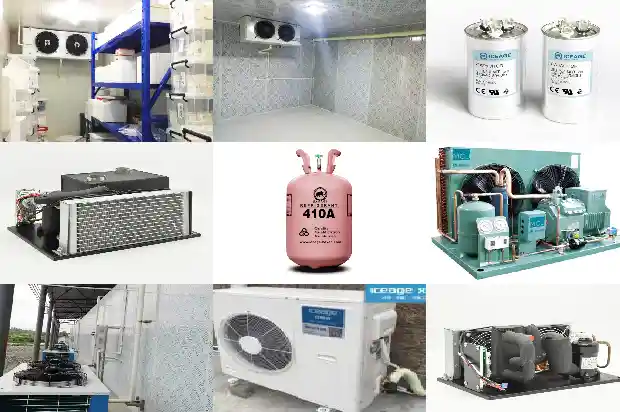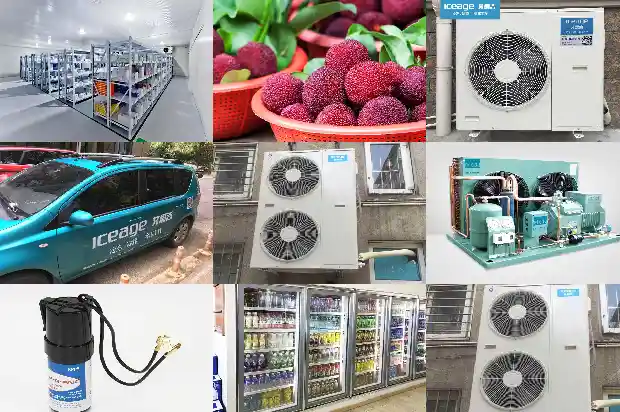Introduction to Control Valves in Refrigeration Systems
2025-02-14
Today, let's talk about three control valves in the refrigeration system, namely the evaporating pressure control valve, the condensing pressure control valve, and the suction pressure control valve. They can optimize the performance of the refrigeration system, and these valves are of great significance in the refrigeration system.

I. Evaporating Pressure Control Valve
The evaporating pressure control valve is also known as the angle valve or back - pressure valve. It is installed in the suction line after the evaporator and is used to regulate one or more evaporators to maintain different minimum evaporating pressures. The evaporating pressure control valve is widely used in refrigeration and cold - storage systems, especially in parallel refrigeration units and multi - temperature cold storage with a single compressor.
As we all know, if the temperature of the cooled object in the refrigeration system needs to be maintained at a specified temperature, a relatively constant evaporating temperature is required, and the adjustment of the evaporating temperature is achieved through the adjustment of the evaporating pressure. When the load changes, the liquid supply of the expansion valve changes, which will cause fluctuations in the evaporating pressure. By installing an evaporating pressure control valve at the outlet of the evaporator, the evaporating pressure can be maintained stable.
The pressure change at the outlet end of the evaporating pressure control valve will not affect its opening degree because the pressure regulator is equipped with a balanced bellows. The evaporating pressure regulator has a pressure gauge interface for setting the required evaporating pressure.
When the cooling load decreases or the refrigeration capacity of the compressor increases due to a decrease in the condensing pressure, the refrigeration capacity of the compressor is excessive, which will inevitably cause the evaporating pressure to drop. With the installation of the evaporating pressure control valve, the valve automatically closes. Even if the suction pressure of the compressor drops, the evaporating pressure can still be maintained at the set value. The valve will not open again until the evaporating pressure rises above the set pressure.
The functions of the evaporating pressure control valve can be mainly summarized as the following three points:
- Ensure the constancy of the evaporating temperature and reduce the fluctuation of the cold - storage temperature.
- Prevent the evaporating pressure from being too low. When the evaporating pressure is lower than the set value, the valve closes.
- In the case of a single - compressor multi - cold - storage system, it enables the evaporators in different cold - storage temperatures to operate under their respective different evaporating pressures.
II. Condensing Pressure Control Valve
The condensing pressure control valve is generally installed on the cooling water pipeline of the condenser and adjusts the flow rate of the cooling water according to the change of the condensing pressure. It adjusts the opening degree of the valve by directly sensing the pressure change of the refrigerant cycle, so that an adequate amount of cooling water can flow through, thus saving cooling water. In areas where the ambient temperature changes drastically, this system can solve many condenser control problems because it can suppress pressure changes and prevent problems from occurring.
When the condensing pressure of the refrigeration system rises, the condensing pressure valve will automatically open wider, allowing more cooling water to enter the condenser and accelerating the condensation speed of the refrigerant. Conversely, when the condensing pressure drops, the condensing pressure valve will automatically close smaller, reducing the amount of cooling water entering the condenser, thus keeping the condensing pressure within a certain range.
The condensing pressure control valve can be used together with the differential - pressure valve. Under the action of the internal spring force, the differential - pressure valve starts to open when the pressure difference reaches 1.4 bar and fully opens when it reaches 3 bar.

The differential - pressure valve is usually used in the hot gas pipeline between the exhaust pipeline and the receiver, aiming to maintain the pressure of the receiver at a certain level.
III. Suction Pressure Control Valve
The suction pressure control valve, also known as the crankcase pressure control valve, is installed on the suction pipe of the compressor. The suction pressure control valve is an automatic valve set between the outlet of the evaporator and the inlet of the compressor.
The suction pressure control valve has direct - acting type and combined type of pilot valve and main valve. The purpose of its adjustment is to avoid the compressor operating under high suction pressure.

Related Articles
- Introduction to Inspection and Handling Methods for Refrigerant Leak in Cold Storage
- Introduction to Basic Types of Cold Storage
- Introduction to Lithium Bromide Absorption Chillers
- Introduction to the Advantages of Dual - temperature Cold Storage
- Introduction to Various Water Tanks in Air - conditioning Systems
- Introduction to the Cleaning Processes and Methods of Heat Exchangers and Cooling Towers
- Introduction to Six Kinds of Two-stage Compression Refrigeration Systems
- Introduction to Key Points of Compressor Grouping in Quick-freezing Cold Storage
- Introduction to the Construction and Features of Cold Storage in Cold Chain Logistics
- All-round Introduction to Condensers and Evaporators!
- Introduction to Vapor Barrier of Cold Storage and Moisture Protection of Equipment
- Introduction to Oil Collector in Refrigeration System
- Technical Introduction of Process Cooling Water System
- Introduction to Air-cooled Chiller
- Introduction to Five Classification Functions of Cold Storage Installation for Refrigeration
- Introduction to Precooling Methods for Fruits and Vegetables
- Introduction to the Relationship between Refrigerants and Cold Storage Temperatures
- Introduction to Types of Condensers in Cold Storage
